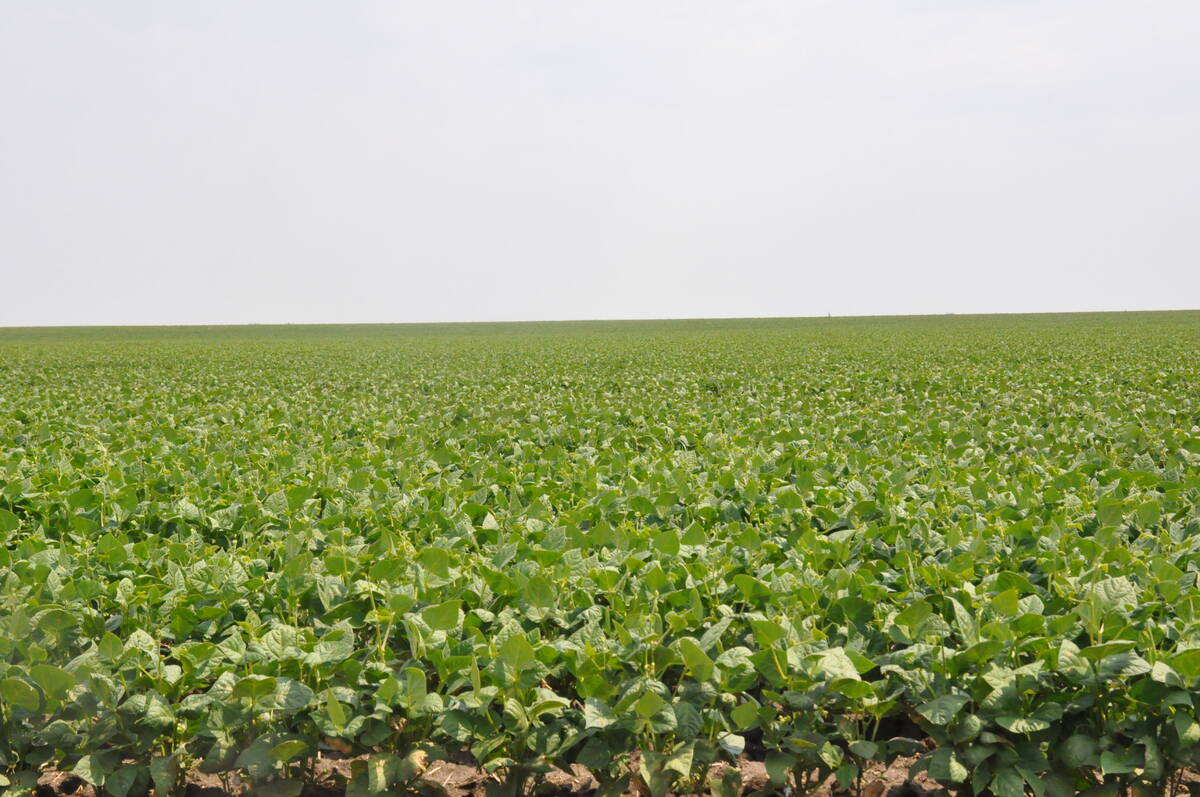HUMBOLDT, Sask. Ñ The battle lines are drawn. An army of noxious weeds in pots stretches across the back of the Humboldt meeting room while municipal weed inspectors seated at tables occupy the front lines.
The inspectors, who will wage war on this enemy, will arm themselves with information on weed identification, prevention and control, both chemical and biological, at this one-day weed inspector training clinic presented by Saskatchewan Agriculture.
A battery of experts was assembled at similar clinics this month at Rosetown and Indian Head, Sask.
Read Also

Coloured bean production down, whites are up
Bean prices have been slumping and the outlook is for more of the same.
Instant identification is the inspector’s first line of defence, explained weed specialist Clark Brenzil, who grew the weeds at the provincial Crop Protection Laboratory in Regina.
Many of the noxious enemies look more like garden plants, including the daisy-like scentless chamomile and the hollyhock-pink field bindweed.
“Live plants help them to better identify the weeds,” he said.
He noted most in attendance are weed inspectors, either paid or appointed in rural municipalities to enforce the Noxious Weed Act.
Some also serve as the local pesticide applicator or pest control officer. Others will never pick up a sprayer but will enforce the act and monitor the enemy’s advance.
“We are promoting actively scouting for weeds before they cover the whole field,” said Brenzil.
“We can catch plants at the stage where we can eradicate them and keep tabs on the patch and make sure no others come back.”
He cited the current invasions of common tansy, scentless chamomile and Canada thistle in Saskatchewan’s northeast and leafy spurge and knapweed in the southwest.
Weed inspectors have bolstered their troops in recent years, with the numbers of rural municipalities with inspectors more than doubling to 196 from 70 since Brenzil started these clinics five years ago.
A Saskatchewan Agriculture war map shows a patchwork of white and green squares, with large tracts of white highlighting areas still without inspectors.
Some RMs choose not to enlist inspectors until the weeds have arrived, said Brenzil. He said the old adage of “an ounce of prevention being worth a pound of cure” rings especially true for weeds.
“If you are watching for it and make sure it doesn’t come in, you can save yourselves oodles instead of trying to contain it afterwards.”
Garry Bowes, co-ordinator of the Noxious Weed Program, works full time in the trenches of organizations like the Saskatchewan Association of Rural Municipalities, preparing data, delivering presentations and promoting proactive weed strategies.
He praised the RM of Corman Park outside Saskatoon for its proactive and long-term plan.
“Councillors there have a good idea of what will happen to the value of land in Corman Park if infested with noxious weeds,” he said, noting leafy spurge infestations render pastures useless to horses and lower property values to potential acreage owners.
The RM controls weeds with early spring spraying of problem areas and the release of species-specific beetles that feed on weeds. It also uses sheep and goats to graze on leafy spurge, whose roots can stretch almost two metres underground.
“They do a really good job,” Bowes said. “If they keep grazing pressure on them, we will start to see their numbers go down.”
Many of these weeds emigrated from Europe with early settlers or are creeping across the borders.
Bowes said the spread can be minimized through diligent scouting and prompt control measures each year.
“If it’s established for only a few years in a small amount, there is an opportunity for eradication,” he said of threats from weeds like star thistle from Montana in the south and spotted knapweed around Regina.
Bowes cited mapping and tools like global positioning systems that can track weeds to within three metres of their locations.
Brenzil added the creation of a weed inspectors’ association could also help advance the cause of control, giving the inspectors a stronger voice, providing a good exchange of information and allowing them to direct their own activities.
Weed inspector Keith Harper, a councillor in Pleasantdale near Naicam, said RMs also have a role in supporting weed control by setting a good example.
Under the act, RMs can order farmers to control weeds or do it for them and bill them later.
Harper’s RM distributes noxious weed information through its ratepayer newsletter and through informal meetings with residents.
“If the RM doesn’t clean up their act, how can we tell some farmer to clean up their act?”
Montrose councillor Murray Purcell, a member of SARM’s weed advisory committee, agreed.
“If you don’t stop it at the local level, you’ll cause problems later on,” he said.
While councils often lack the finances to hire inspectors, Harper acknowledged the challenges for councillors to police their neighbours.
Weed inspectors drawn from their home communities do provide invaluable information in the war against weeds because they know the local landscape, said Brenzil.














